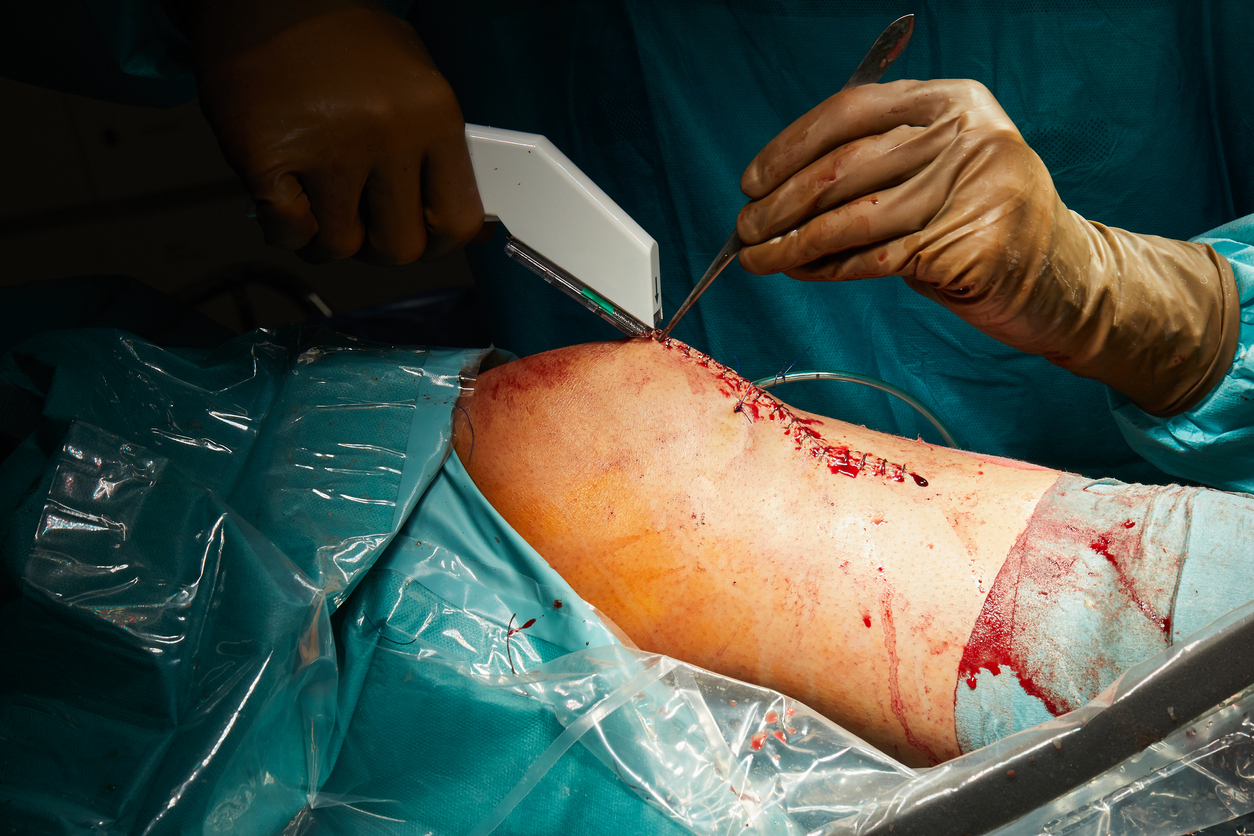
The anterior cruciate ligament (ACL) is located in the knee, connecting the thigh bone and tibia and helping keep the joint stabilized. The ACL can be torn if there is a sudden change in direction or speed, or if a direct blow is sustained to the knee. This type of injury most commonly occurs during sports that involve jumping, cutting, or changing directions quickly, such as soccer, basketball, football, and tennis. Approximately 200,000 ACL tears occur each year in the United States alone.
While an ACL tear may not necessarily require surgery for all patients – particularly athletes who participate in sports – those who want to return to high-level athletics will likely need surgical intervention to repair their torn ACL ligament. This surgical repair can now be performed using a minimally invasive technique called arthroscopic knee repair as an outpatient procedure. Let’s discuss what happens during ACL surgery.
Autograft vs. Allograft
There are two main types of ACL reconstruction surgery: autograft and allograft procedures. Your surgeon will recommend which procedure is best based on your situation, but both involve replacing the damaged ligament with a new one using either tissue from your own body (autograft) or a donor (allograft). Autografts are usually recommended for patients with physically active lifestyles, while allografts are recommended for elderly patients with a history of pain.
The Procedure
The first step of either procedure involves making small incisions around the kneecap where the surgical instruments and the arthroscope, which is a tool with a light and camera at the end, will be inserted. The arthroscope allows the doctor to see inside the knee, as the images will be shown on a monitor in the operating room.
Once inside, any additional damage to the cartilage or other structures will be repaired before grafting material is placed into position using special fixation devices. The new graft will be tensioned until it resembles how tightness should feel on a healthy ACL — this ensures that it functions correctly once healed. After confirming proper positioning and tensioning, surgeon will sew up any remaining open spaces within the knee using dissolvable sutures before closing up external incisions with stitches/staples. The doctor may apply a knee brace after surgery, as well as a cold therapy device to help with swelling.
All in all, minimal disturbance to the surrounding tissues during arthroscopic knee repair allows the patient less pain after surgery and a fast recovery.
ACL Surgery in Bismarck, North Dakota
If you’re searching for an orthopedic surgeon in Bismarck who is highly experienced in ACL surgery, choose Dr. Chad B. Carlson, our board-certified knee surgeon at The Bone & Joint Center. Dr. Carlson has advanced training in knee arthroscopy and has performed this surgery numerous times. Our facility also offers superior physical therapy services from licensed and highly qualified physical therapists.
Find out what ACL repair treatment Dr. Carlson recommends for you. To schedule an appointment, call our office today at (701) 946-7400 / (866) 900-8650 or use our convenient online request form. We look forward to serving you.

